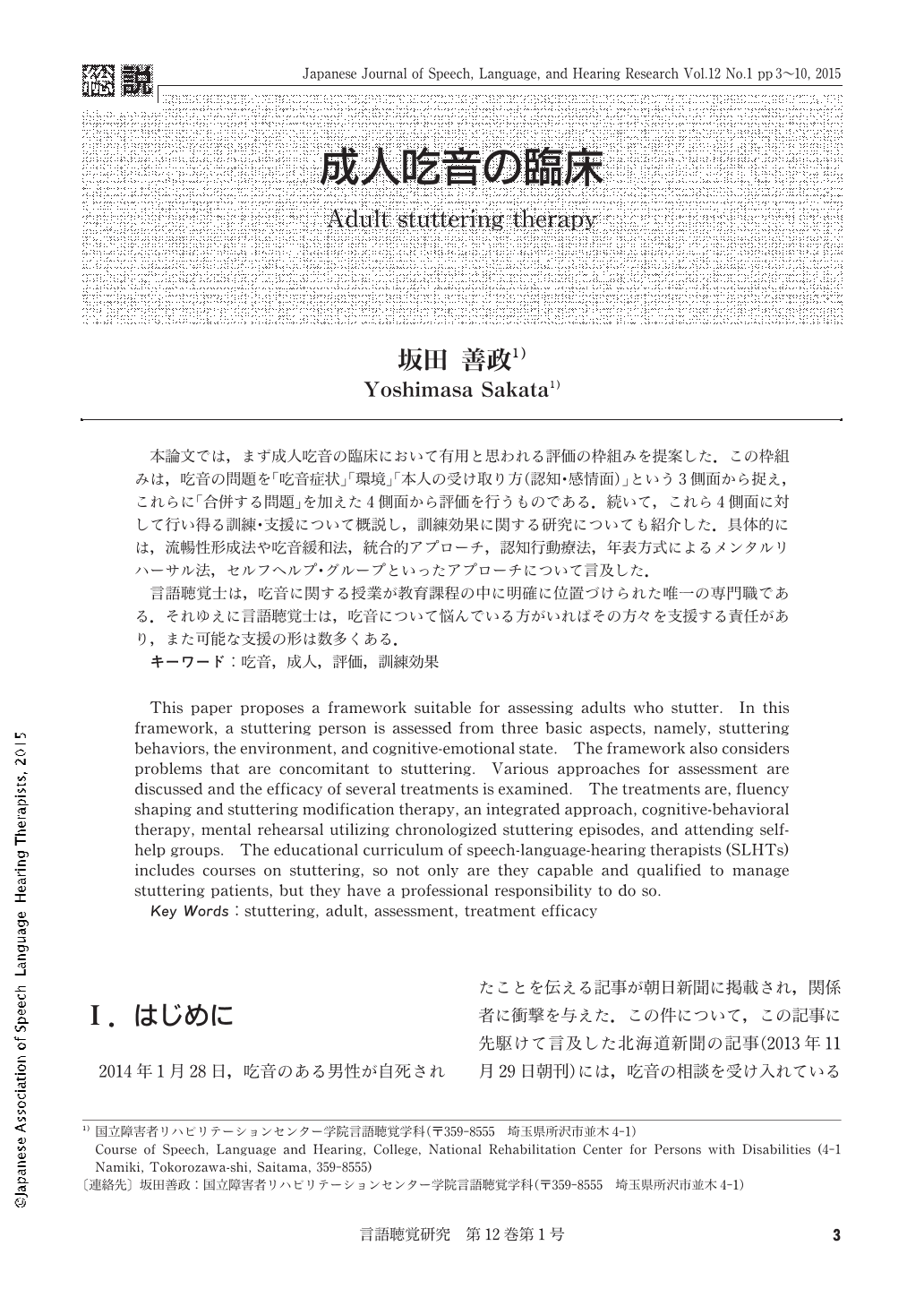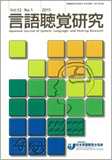Japanese
English
- 有料閲覧
- Abstract 文献概要
- 1ページ目 Look Inside
- 参考文献 Reference
- サイト内被引用 Cited by
本論文では,まず成人吃音の臨床において有用と思われる評価の枠組みを提案した.この枠組みは,吃音の問題を「吃音症状」「環境」「本人の受け取り方(認知・感情面)」という3側面から捉え,これらに「合併する問題」を加えた4側面から評価を行うものである.続いて,これら4側面に対して行い得る訓練・支援について概説し,訓練効果に関する研究についても紹介した.具体的には,流暢性形成法や吃音緩和法,統合的アプローチ,認知行動療法,年表方式によるメンタルリハーサル法,セルフヘルプ・グループといったアプローチについて言及した.
言語聴覚士は,吃音に関する授業が教育課程の中に明確に位置づけられた唯一の専門職である.それゆえに言語聴覚士は,吃音について悩んでいる方がいればその方々を支援する責任があり,また可能な支援の形は数多くある.
This paper proposes a framework suitable for assessing adults who stutter. In this framework, a stuttering person is assessed from three basic aspects, namely, stuttering behaviors, the environment, and cognitive-emotional state. The framework also considers problems that are concomitant to stuttering. Various approaches for assessment are discussed and the efficacy of several treatments is examined. The treatments are, fluency shaping and stuttering modification therapy, an integrated approach, cognitive-behavioral therapy, mental rehearsal utilizing chronologized stuttering episodes, and attending self-help groups. The educational curriculum of speech-language-hearing therapists(SLHTs) includes courses on stuttering, so not only are they capable and qualified to manage stuttering patients, but they have a professional responsibility to do so.

Copyright © 2015, Japanese Association of Speech-Language-Hearing Therapists. All rights reserved.


